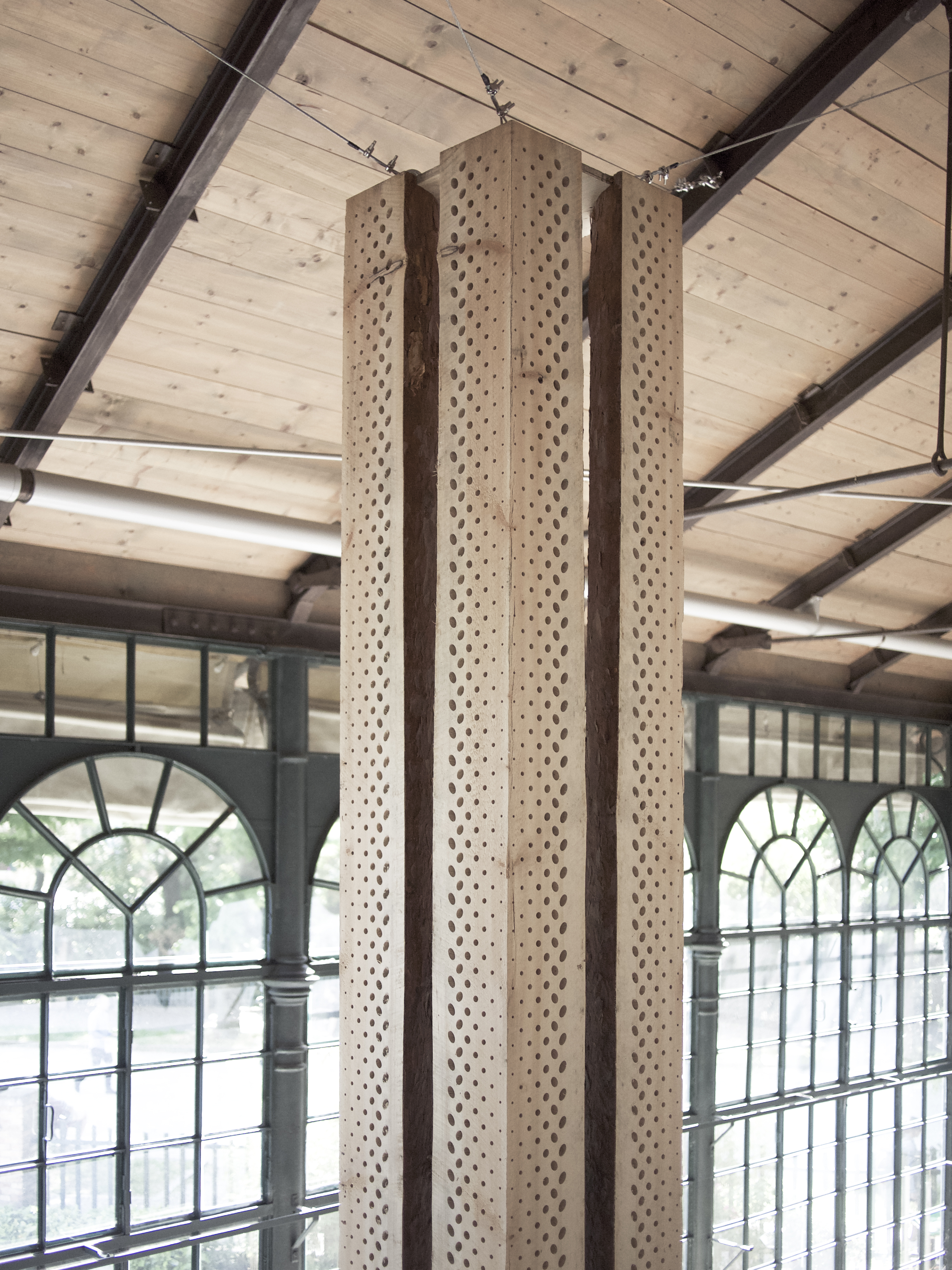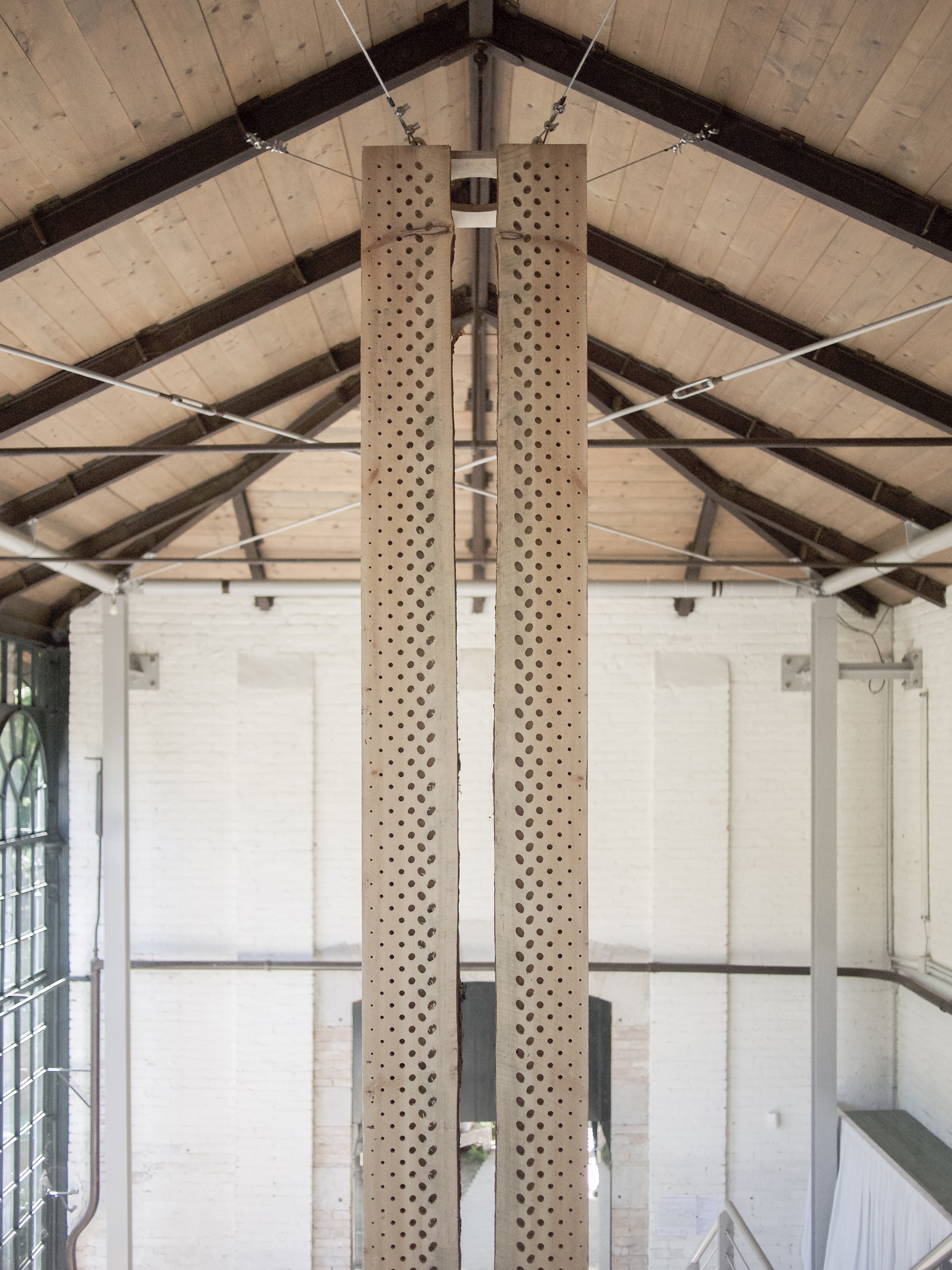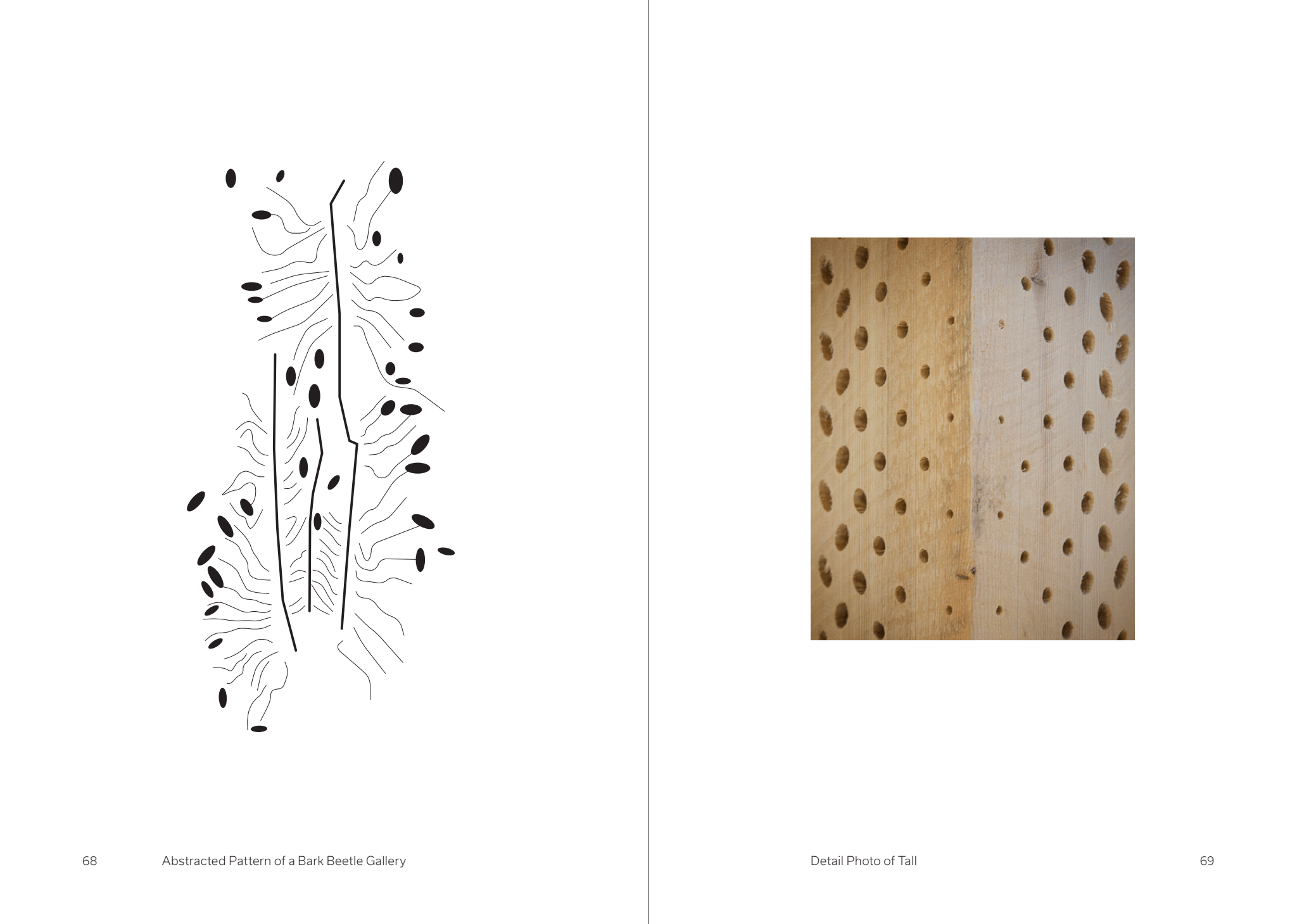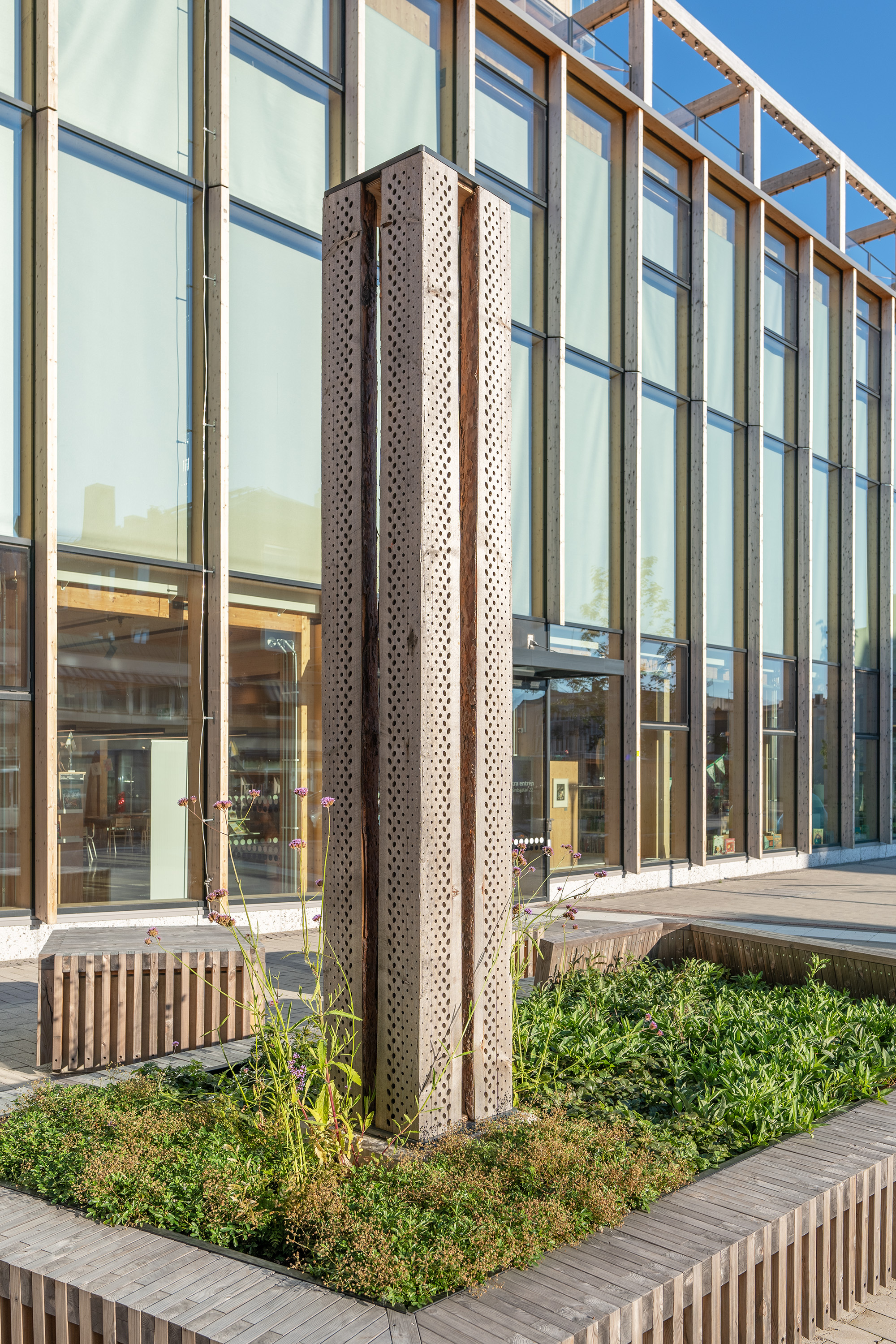TALL
Serra dei Giradini, Venedig
2018


Tall is the most common tree in northern Sweden: the Scots pine, Pinus sylvestris.
Its characteristics of growing straight and tall makes it a frequent choice when building in wood closely connected to Swedish architecture. The pine tree in its raw state with the bark still attached is an uncommon sight outside of its natural environment. Harvesting and debarking is made on site by logging machines before it is transported to saw mills and other industries where it is transformed into standardised units to be used for building. In Swedish, even the name of the pine tree changes when the pine shift from its tree state: ”tall” to its building material state ”furu”.
In its natural habitat, the pine tree is an important part of the ecosystem during its lifespan and after its death. Due to its high levels of resin the pine tree decomposes slowly, sometimes lasting decades. The pine gives shelter to insects that live under the protection of the bark. In Sweden alone about 60 different species of butterflies and around 350 different species of beetles use the pine as their dwelling, about half of which are exclusive to the pine tree. Some bugs burrow holes, paths and nests in decorative patterns in the outermost part of the wood forming a kind of architecture.
Each hole in the installation is a potential dwelling for an insect and the voids are shaped in order to attract different species of insects. By its repetition and scale, the installation can also be seen as the abstract model of a residential complex.
Through deconstruction and the application of CNC-technology, industry and nature are juxtaposed. The raw texture of the wood with its grain and shift in colours, combined with the symmetrical precision-cut pattern, emulates naturally occurring insect patterns and highlights the organic through the artificial. The core of the trunk is inverted to become the corners of a square pillar, exposing the wood previously hidden beneath the bark.
This specific trunk originates from the small village of Storsträsk, taken to a local sawmill to be divided into quarters at three meters length each. The cutting of the holes and detailing was carried out in Piteå before shipping to Venice, Italy. At the end of the biennale, TALL will be dismantled and cut into pieces to become housing for a whole new population of insects.





Nordmark & Nordmark arkitekter
Plots, prints and projections- displaced, Form och designcentrum, Malmö, 29 april-19 maj 2019
Plots, prints and projections, Serra dei Giradini, Venedig, 26 maj-25 november 2018
Permanent plats utanför Sara Kulturhus i Skellefteå, 2023
Sveriges Arkitekter, Svenskt Trä och Folkhem
Curator Ulrika Karlsson
Samarbete med Norra Skogsägarna och Trisco specialsnickeri
Hem